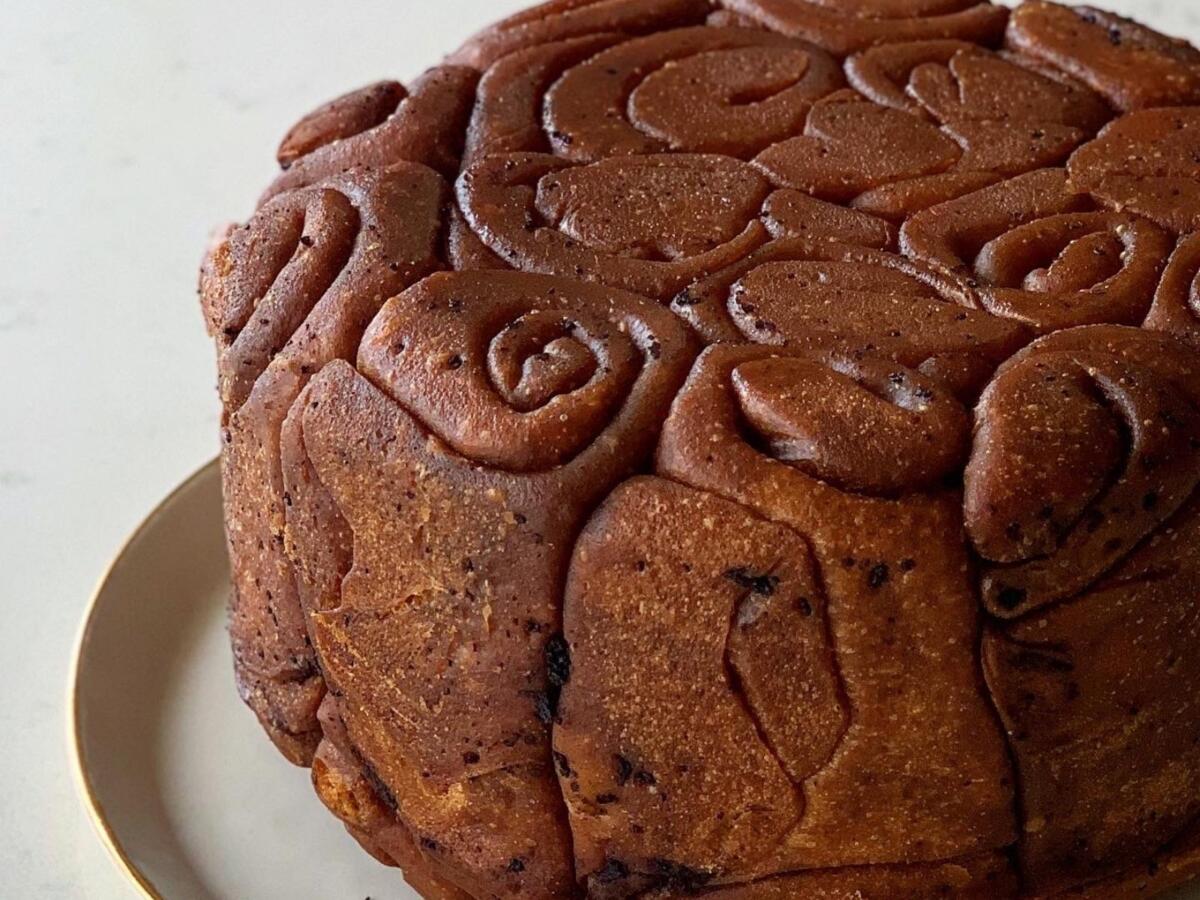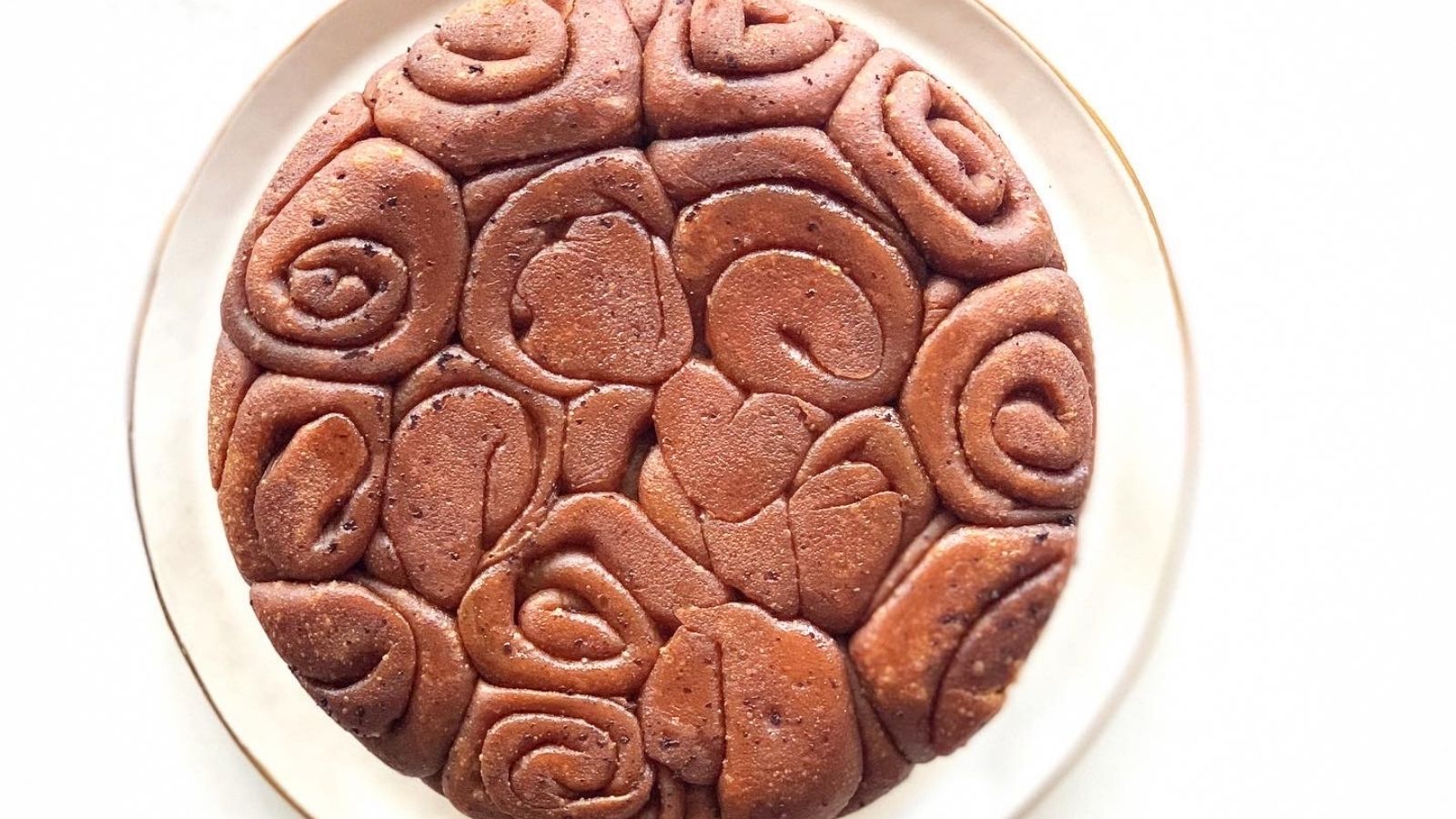Kubaneh is a uniquely Yemenite Jewish bread that is traditionally slowly baked in a tall, round pan overnight, from Friday to Saturday, to enjoy on Shabbat morning. Yemenite Jewish immigrants brought it to Israel, where it has gained considerable popularity. Its flaky, buttery, pull-apart texture makes it irresistible. It’s typically eaten with a simple grated tomato dip and slow-cooked eggs that are often cooked right on top of the bread in the same pan.

Click here to watch a video tutorial from Lior on making this beautiful bread.

How to Make Buttery, Yemenite Kubaneh Bread
Kubaneh is a uniquely Yemenite Jewish bread that is traditionally slowly baked in a tall, round pan overnight, from Friday to Saturday, to enjoy on Shabbat morning. Yemenite Jewish immigrants brought it to Israel, where it has gained considerable popularity.
- Total Time: 10 hours
- Yield: 4-6
Ingredients
- ½ cup water
- 4½ cups all-purpose flour
- 1¾ tsp dry yeast
- ⅓ cup granulated sugar
- 2 tsp salt
- 2 large eggs + 3 egg yolks
- ¼ cup olive oil
- 1 cup + 1 Tbsp unsalted butter (17 Tbsp), at room temperature
Instructions
- Place the water, flour, yeast, sugar, salt, eggs and egg yolks in the bowl of a stand mixer fitted with the dough hook. Mix on a low speed for about 1 minute, until dough forms.
- Increase the speed to medium low and knead for 5-7 minutes until it forms a smooth, soft dough. Add the olive oil and knead until it’s fully incorporated into the dough.
- Shape the dough into a ball and place in a lightly greased bowl. Cover with a towel or a loose plastic wrap and let rise for 30 minutes at room temperature.
- Punch down the dough, cover and let rise for another 30 minutes.
- Grease an 8” cake pan (you can also use a springform pan or special, tall kubaneh pan) generously with butter.
- Divide the dough into eight equal pieces, roll into balls and place on a greased plate. Brush the dough balls with butter and cover loosely with plastic wrap. Let rest for 10 minutes.
- Grease your hands and the work surface with a spoonful of butter. Using your hands, press, flatten and stretch a dough ball into a large square as thin as you possibly can, without tearing it.
- Fold the left and right sides of the dough in towards the center, creating a letter fold. Roll the dough all the way up from a short side to create a swirled cylinder. Repeat this with the remaining dough balls.
- Using a sharp knife, cut each cylinder in half across the middle so it forms two tall swirls (they will look a little like taller cinnamon rolls). Place each piece in a single layer in the kubaneh pan, cut side facing up. Continue until the pan is full and you’ve used all the dough.
- Brush some butter on top of the unbaked kubaneh, cover and let rise at room temperature for 1 hour.
- Preheat the oven to 220°F. Cover the kubaneh with aluminum foil, making sure to leave the top loose, since the dough will continue to rise while baking.
- Bake for 8–10 hours. Every 2 hours or so, brush the kubaneh with 1-2 Tbsp butter.
- Release the kubaneh from the pan and place on a cooling rack.
- Prep Time: 2 hours
- Cook Time: 8 hours
- Category: Breakfast
- Method: Baking
- Cuisine: Israeli
The Nosher celebrates the traditions and recipes that have brought Jews together for centuries. Donate today to keep The Nosher's stories and recipes accessible to all.




Leave a Comment